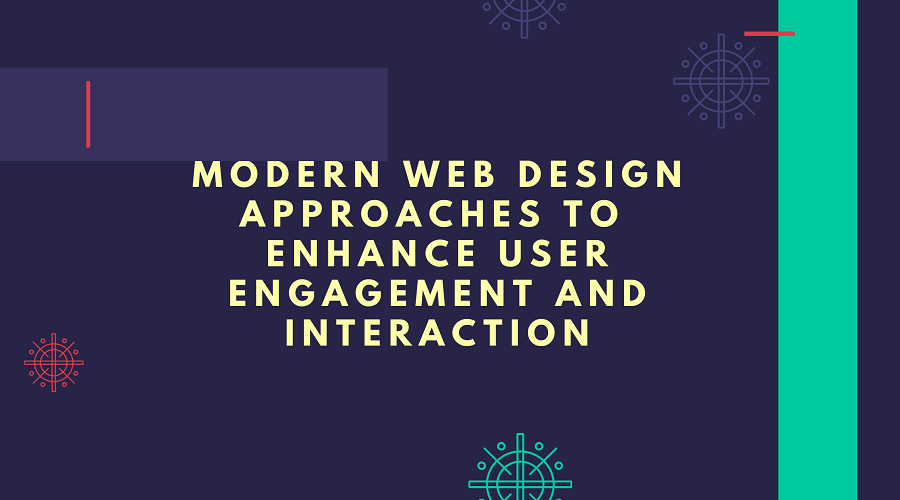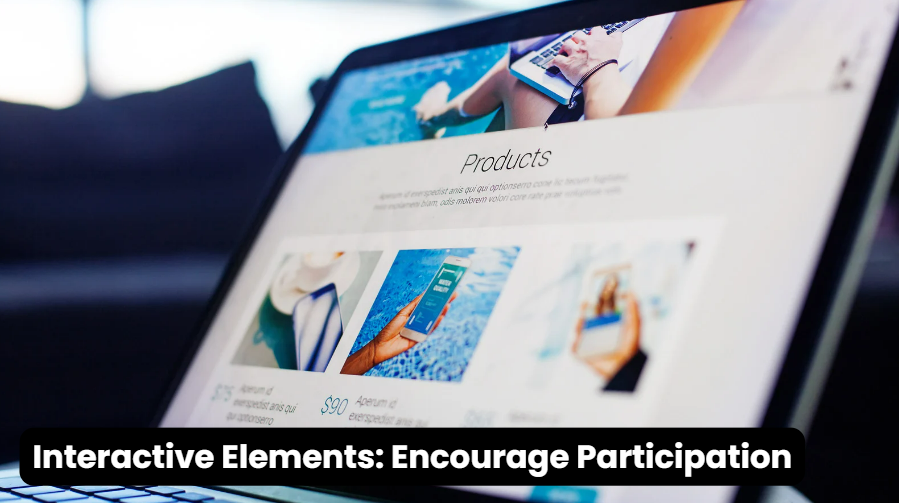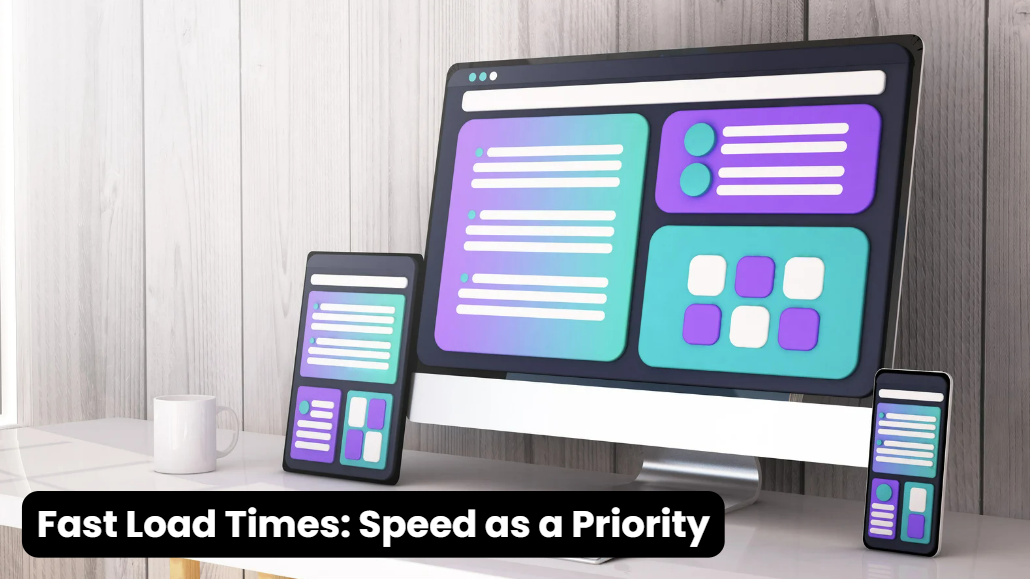
Modern Web Design Approaches to Enhance User Engagement and Interaction

Are you finding it challenging to keep visitors engaged on your website? In this digital world where users click on multiple options lying at their fingertips, the requirement of modern web design that will win over the visitor’s attention and induce meaningful interaction has been very crucial.
It signifies much more than how beautifully it looks, it’s essential to drive user engagement, foster interaction, and finally convert visitors into satisfied customers.
Responsive Design: A Must-Have for All Devices
A responsive design offers users a seamless experience across all devices, tailored to their fast-paced lives. Not only will this improve the user experience, but it will also affect your site’s rank in search engines, as mobile usability plays a significant role in Google’s algorithm. Consequently, your site must be responsive to all screen sizes to meet the needs of these mobile users.
In the U.S., with cities like New York leading the charge in mobile internet usage, having a responsive website isn’t just a luxury—it’s a necessity. Your site needs to adapt to the demands of mobile users, and a tailored web design new york guarantees an optimal experience for visitors as they transition from desktop to mobile, ensuring high engagement rates even while on the move.
Minimalism: Clean and Purposeful Design

Simplicity speaks volumes. Minimalistic designs, characterized by clean lines, white space, and focused content, are also very effective at directing user attention toward the reduction of distractions. Fewer elements on a webpage help users focus on the important content or actions that matter to them in terms of message, product information, or a call to action.
Minimalism eliminates clutter and provides a clear focus on what’s worth interacting with on the website. Taking away a few distractions frees up users, so they can easily access their desired information. This enhances their satisfaction and maximizes the prospect of desirable actions – such as filling out a form or making a purchase.
Interactive Elements: Encourage Participation

Modern affordable web design services are not just presenting information but rather using interaction so that the user has to be the one to participate. Interactive elements, including quizzes and polls, sliders, animations, and hover effects, turn an otherwise dead scroll of a passive website into an active one.
Interactivity will attract people’s attention and invite them to spend more time exploring the content. For instance, an easy quiz or simple calculator tool can make the contents appear according to a user’s interests and demand more of their time on site. These elements will also make the site appear more dynamic and responsive, which will leave an impression on the visitors.
Micro-Animations: Subtle Movements for Big Impact
Micro-animations are subtle, micro-movements that guide the user through the site, pointing them toward important features and interactions. Carefully executed animations can amplify engagement with your site, without pulling the attention away from core content.
When such micro-animations provide a sense of visual cues within the site, users intuitively navigate through them. For example, an animation on a slight mouse-clicking button or a hovering cursor on the image may signify that the user is clicking in the right direction. The animations also create an element of delight, which makes browsing much more interactive and fun.
Personalization: Tailor the Experience
Personalization has emerged as one of the most pivotal approaches toward creative web design studios. Among these approaches are targeted content, product recommendations, and dynamic landing pages depending on user behavior, location, or browsing history.
When a website aligns with users’ needs and preferences, engagement rates increase. Personalization has a high likelihood of improving relevance, where users find that the site respects them and understands their preferences to a large extent. This rises to give a higher chance of more sessions, more interaction with the site’s features, and even more conversion rates.
Fast Load Times: Speed as a Priority

Speed can be seen as an aspect of web design firms for startups related to user engagement as well as being a factor in search engine ranking. With attention spans dwindling, most users like to see websites loaded almost instantaneously. A web page that takes too long to load frustrates the users, which causes higher bounce rates and engagement levels.
A fast-loading site will avoid frustrating users into abandoning the site. When all content is quickly accessible, then visitors are likely to stick around and browse through and engage in various aspects of the site. In contrast, even a few seconds of delays result in a significant drop in engagement.
Second, optimize your images and video files so they do not slow down your website. Developers should minimize large scripts and consider using a caching solution or content delivery network to make the loading times faster. Always test your site for speed and solve any problems that crop up.
Clear Calls to Action (CTAs): Direct Users Effectively
Any site succeeds with effectively clear and compelling calls to action. Whether it’s subscribing to a newsletter, purchasing a product, or asking for more information on a product, these calls tell a user what he or she should do next in his or her journey.
Well-designed CTAs help users take the next step and engage with the site. Conversely, if the CTAs are unclear, the wrong placement of CTAs or too many CTAs on a page frustrate the user to leave the site without accomplishing any action. Clear, concise, and well-positioned CTAs can make a huge difference in user engagement and conversions.
User-Centric Design: Prioritize the Visitor Experience
| Aspect | Description |
| Core Principle | The heart of modern custom web design agency is centered around a user-centric approach. |
| Focus of Design | Every detail in the design process must focus on the needs, behaviors, and expectations of the user. |
| Essence of UX | UX creates a website that is intuitive, easy to navigate, and enjoyable to use. |
| User Navigation | When users can easily locate what they want and navigate without confusion, they are retained longer. |
| Benefits of Good UX | Good UX reduces frustration, builds trust, and encourages users to explore the site more deeply, improving overall interaction. |
Conclusion
Modern web design is not only about aesthetics but building a working, engaging, and user-friendly experience that will talk to the visitor. All of the steps mentioned above must be taken to make the website more interesting and lively for the users. With that, all of these points will be vital for keeping users coming back for more in this intensely competitive digital marketplace.
FAQs
- What is responsive design, and why is it important?
Responsive design ensures that websites adapt to various screen sizes and devices, providing a seamless user experience that keeps visitors engaged.
- How does minimalist design enhance user engagement?
Minimalist design reduces clutter, allowing users to focus on essential content and interactions, which can lead to increased satisfaction and longer visits.
- What are interactive elements, and how do they improve user interaction?
Interactive elements like quizzes, polls, and animations encourage users to participate actively, making the browsing experience more engaging and enjoyable.


Leave a Reply